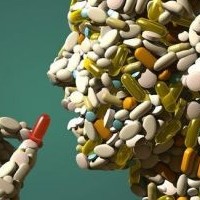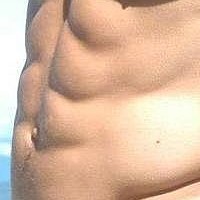Weight Loss Product Warnings -- How to Spot Fat Burning Diets
This is the second article in the series, Weight Loss Product Warnings. How to Spot Fat Burning Diets teaches you how to analyze a diet's fat burning potential. The ultimate goal is for you to trust your own judgement and not rely on the words of a face less affiliate website promoting the latest and greatest fat burner.
Why is this important? Because burning fat is the only way to healthy weight loss. Marketers of weight loss products know about burning fat and, as a result, have flooded the net with fat burning advertisements. It is my goal to teach the five easy steps used to analyze a diet's fat burning potential.
Fat Burning Diets...The 5 Step Analysis
1) Check the Rate of Losing Weight
How fast do dieters on this specific diet lose weight? The rate of losing weight should not exceed a maximum of 2 pounds per week. The classic fast weight loss ad is similar to, "Lose X pounds in Y time." Calculate the amount of weight loss per week, given the information in the ad.
Here's an example (a real ad placed in 2003)...
"Lose 10 Pounds and 4 Inches in 10 days!"
At one pound per day, the week's weight loss is 7 pounds. This is way over the 2 pounds per week maximum and simply is not healthy.
2) Check the Reduction in Total Calories
A diet plan that reduces total calories by more than 500 calories per day is promoting unhealthy weight loss. Did you know that cutting out only 250-500 calories, without doing anything else, will lead to a pound per week of weight loss? That's it. No fancy nutritional calendar, no weight loss pills, not even a highly guarded secret is needed. Just drop 250-500 calories from your diet and you will lose fat.
To analyze a diet program for calorie restrictions, look for any statements referring to the total calories you would eat on a typical day. To find this information, you might have to dig a little deeper and research several websites. But you'll find it.
If the diet calls for a reduction greater than 500 calories, it's not healthy weight loss.
3) The Diet's Exercise Plan
Does the diet have an exercise plan? Yes, good. As long as it's not a rapid weight loss diet or promoting extreme calorie restrictions, healthy weight loss is a good bet.
I can not stress enough the importance of a resistance training program as part of your exercise plan. Think muscle. Follow these three simple "muscle" rules when trying to lose weight...
- Don't lose it
- Tone it
- Build it
4) Analyze the Amount of Fat Intake
To lose fat you need to eat fat. But it needs to be the right kind of fat. When analyzing a diet for the types of fat you can eat, look to see if they list healthy fats. For a listing of healthy and harmful fats, check out How to pick a diet and make note of the good fats.
5) The Amount of Protein Intake
An adequate amount of protein must be included with any diet plan. How much protein? Depends. Make sure the diet you're analyzing has at least the normal daily requirement of 1 gram of protein per kilogram of weight per day but no more than 1.5 grams per kilogram per day (up to 2 grams/kg if body building).
Summary of Each Analysis
To Healthy Living!
Michael A. Smith, MD
Weight Loss Professional
Dr. Smith is the primary physician and consultant for the Weight Loss Professional Website. His interests include preventative medicine, the genetic etiology of obesity, and several others too numerous to list.
Please visit his Website at http://www.weight-loss-professional.com and let him know what you think.
-
Advantages Of Nutritional Weight Loss
Today there are many paths a person may take to potentially lose w
-
Stock Assault 2.0 - Does It Work?
Does the Stock Assault 2.0 automatic stock picking software work as we
-
How to Lose a Double Chin - Does Your Double Chin Make You Frustrated?
You wake up in the morning and then watch yourself in the mirror and w
-
Ten Popular Myths Related to Weight Loss: True or False?
Everyone heard tips from the gym or the workplace about how to stay in
-
How to Lose Fat Quickly: 3 Important Factors
How to lose fat quickly is a topic among many of us today. Finding tim
-
Seattle HCG- Effective and quick weight loss plan
With the HCG you can cut down the excessive fats from your body. This
- DON'T MISS
- Do Cellulite Reduction Creams Work?
- Maple Syrup Diet - Too Low In Calories?
- Fat Burning Furnace - Fat Loss Weight Training Program Minus Boring Cardio!
- Morbid Obesity
- Reduce Body Fat
- Weight Loss Options -- Infrared Radiant Heat Saunas (IR Saunas)
- 9 Terrible Facts About Hoodia Gordonii
- Fat Burning Furnace Ebook Torrent
- Want To Lose This Weight Once & For All? See Which Steps You Must Implement In Order To Be Thin And Healthy! - Ever Loss
- Final Phase Fat Loss Review-Final Phase Fat Loss Review




